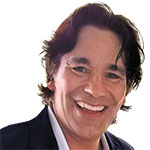Experts’ Insights: What to know about moisture sensors

Soil moisture sensors such as the Turf-Tec, Field Scout and Pogo models pictured reduce the risk of overwatering greens. (Photo: Turf-Tec International)
A good soil moisture sensor only needs one chance to prove itself.
“If it saves you one application a year — you don’t overwater and by not overwatering, you don’t have to apply a fungicide to a set of greens because you didn’t promote a disease — you’ve just paid for the sensor,” says John “Trey” Rogers III, Ph.D., a turfgrass professor at Michigan State University.
Rogers calls time-domain reflectometry (TDR) sensors one of the Top 3 innovations in the golf world in the past three decades, alongside soft spikes and fans.
“If there’s one area that we know is going to get a superintendent in trouble time and time again, it’s overwatering,” Rogers says. “We spend millions of dollars in drainage, millions of dollars learning how to design a putting green correctly so it drains properly. You can’t play this sport when it’s wet.”
That said, even the best systems are no replacement for experience and common sense. Sensors tell superintendents moisture levels at specific spots on a course, but knowing what to do with that information is critical.
“Twelve might have been the number for July or the number for May or the number for the 12th green that has complete sun and a great growing environment,” Rogers says. “A superintendent is going to have a number for each green. They might even have a number for each segment of each green.”
To get the most out of sensors, Rogers says superintendents must:
Know their courses — “Know the portions of your golf course that are going to be your indicators where things are going to dry out first.”
Use the correct rod length — “I’ve changed probes more than once on consultation visits.”
Calibrate sensors — Test the sensor in distilled water to set the 100 reading and in the air for 0.

John Moscaro
Turf-Tec International
John Moscaro
President
Soils differ in mineral content, texture, particle size, organic matter content, air space and microorganism levels, so no two soils are the same. Find the soil moisture range for each specific area on a course. Determine the depth of turfgrass roots for that time of year and adjust the moisture sensor to that depth. Saturate the area with your irrigation water and allow it to percolate into the soil until it reaches field capacity and there is no standing water. Probe this area with a moisture sensor to get the wet reading. Next, find an area with turf just starting to wilt and test it to give you the dry reading. You can now adjust your watering practices to match the 50 percent reading between the wet and dry numbers.

Brad David
GroundWorx
Brad David
CEO
Water and energy savings (decreased pumping) might be the initial focus, but sensors can help do so much more. Place sensors where they will be the most impactful across the entire course, not just in trouble spots. Consistent readings tell you just as much about a course as volatile readings. Trust the data: turf managers will often question accuracy because they had no previous real information as to salt issues they may discover. Sensors work in unison with information gleaned from spot-check devices to provide a full picture from surface level to the prime measurement depth of your root-bases on the course. Remember, most sensors are created with highly scientific devices with years and years of R&D behind them. Ultimately sensors can eliminate guesswork and create staff efficiencies.

Mike Thurow
Spectrum Technologies
Mike Thurow
President, CEO and founder
It’s necessary for golf course superintendents to monitor soil moisture over time with in-ground sensors, located in multiple locations, or with portable soil moisture meters. Greenskeepers are likely to get different readings depending on where they are on the course. Taking multiple readings in different zones of the putting green generates representative readings. Determining what is the right level of moisture can be a tricky proposition. Greens can have shallow root systems. So, if the moisture is 5 inches down, the roots from a golf course green or a high-end athletic turf field can’t reach it. Using multiple-length, replaceable rods measure moisture, salinity and temperature in the soil, providing accurate soil moisture readings across a wide range of soil conditions and at various depths.

Carmen Magro
Pogo TurfPro
Carmen Magro, CGCS
Vice president
The entire reason for sampling is to see the symptoms coming before they show up. With routine representative sampling, trending analysis with turf conditions gives that insight. Target the upper 6 cm when sampling as this region has the most significant influence on surface performance, moisture and nutrient exchanges, regardless of turf or soil type or root depth. Understanding equipment and its engineering is vital. If you don’t properly calibrate your equipment along with the required number of samples, you cannot use the information as representative. So, know your sensor and its limitations, or it will not serve you well. Finally, never lose the skill of being a well-educated, sharp and open-minded superintendent. This art is what makes our profession so great. Sensing gives numbers. But never manage to a number. Use your eyes and intuition.












